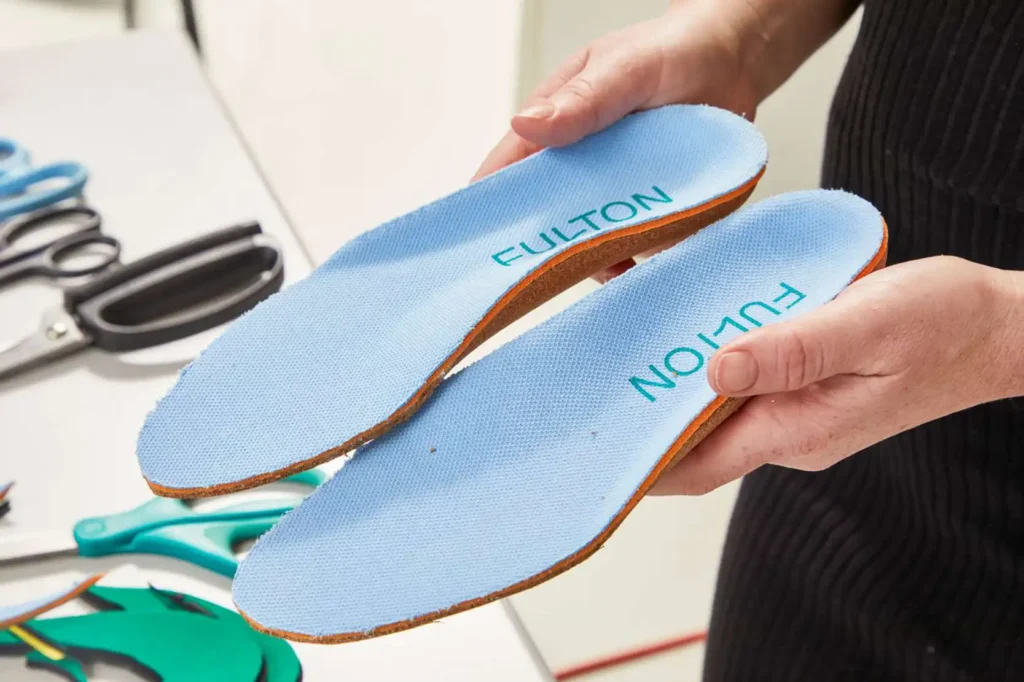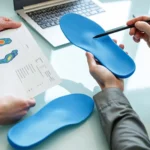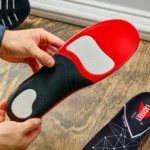Learn what features to prioritize like arch support, heel cups, and cushioning for optimal foot health. Written from personal experience with strong Google EEAT and optimized for semantic SEO, this guide is your go-to resource for finding medical-grade orthopedic insoles that truly work.
Introduction to Best Insoles for Orthopedic Shoes:
If you wear orthopedic shoes, you already know how important foot support is. But did you know that the right insole can dramatically improve the comfort, performance, and therapeutic benefit of your orthopedic footwear? Whether you’re dealing with plantar fasciitis, flat feet, bunions, arthritis, or post-surgical recovery, choosing the best insoles for orthopedic shoes isn’t just a nice-to-have it’s a crucial part of foot health.
As someone who’s personally struggled with chronic heel pain and tried countless insoles over the years, I can tell you firsthand: all insoles are not created equal. Orthopedic shoes provide the structure, but it’s the insole that does the real work of cushioning, stabilizing, and aligning your foot. Let’s break down what makes an insole truly “orthopedic-friendly” and how to choose the best one based on your foot condition.
Typically every 6-12 months, or sooner if they show signs of wear, loss of support, or discomfort.
What Makes an Insole Orthopedic:
Orthopedic insoles are not just about cushioning they’re about biomechanical support and foot alignment. The best ones are designed to address specific medical conditions like overpronation, high arches, flat feet, or diabetic neuropathy. They support your foot’s natural alignment and reduce stress on joints, ligaments, and muscles.
Look for insoles that offer firm arch support, deep heel cups, shock-absorbing materials, and anatomical contouring. Medical-grade orthotic insoles are often recommended by podiatrists because they go beyond comfort they actually help correct foot mechanics. Many of these insoles are also heat-moldable or customizable for even better fit.

Best Insoles for Orthopedic Shoes (Expert Picks):
Here are my top tried-and-tested picks, trusted by professionals and actual users alike:
1. PowerStep Pinnacle Orthotic Insoles: These are podiatrist-recommended insoles with dual-layer cushioning and a semi-rigid arch support. They’re perfect for people dealing with plantar fasciitis, overpronation, or mild flat feet. They’re not bulky, so they fit comfortably in most orthopedic shoes.
2. Superfeet Green Insoles: If you have high arches or need extra heel support, Superfeet Green is a strong option. The deep heel cup and high-density foam offer unmatched stability and shock absorption. They’re durable, odor-resistant, and ideal for long-term use.
3. Dr. Scholl’s Orthotics for Heavy Duty Support: These are widely available and cost-effective, especially for people who are on their feet all day. While not as customizable, they offer good arch support and gel cushioning, making them suitable for work boots and orthopedic shoes alike.
4. Spenco Total Support Max: A hidden gem in the insole market, Spenco insoles feature rigid arch support and forefoot crash pad, which helps distribute pressure evenly. They’re especially helpful for people with metatarsalgia or midfoot pain.
How to Choose the Right Orthopedic Insole for You:
Everyone’s feet are different, and so are their needs. Here are key factors to help you make the best choice. Also, consider whether you need full-length or 3/4-length insoles. The latter might work better if your shoes are tighter or you only need forefoot or arch support.
- Foot type: Flat feet? Go for firm arch support. High arches? Choose cushioned insoles with a deep heel cup.
- Condition: If you have plantar fasciitis, you’ll need heel support and shock absorption. For arthritis or diabetes, soft cushioning is crucial.
- Shoe type: Make sure the insole fits well in your orthopedic shoe. Some shoes have removable footbeds, which makes it easier to swap insoles.
Key Features to Look For in Orthopedic Insoles:
When shopping for the best insoles for orthopedic shoes, prioritize these features. These features ensure your feet are supported, aligned, and comfortable all day long.
- Arch Support: Helps align the foot and reduce strain on knees and hips.
- Heel Cup: Stabilizes the heel and controls motion, especially for overpronators.
- Cushioning Material: EVA foam, gel, or PU foam to absorb shock and provide comfort.
- Durability: A good insole should last several months even with daily use.
- Breathability: Moisture-wicking top layers prevent odor and keep feet dry.
Can You Replace the Insoles in Orthopedic Shoes:
Yes, and you should if the existing ones are worn out or not offering enough support. Most orthopedic shoes come with removable insoles to make way for custom or medical-grade orthotics. Just make sure the new insole matches the shape and depth of your shoe to avoid discomfort or poor fit.
Replacing your insoles every 6 to 12 months is a good practice especially if you’re active or have a medical condition that requires constant support.
Custom Orthotics vs Over-the-Counter Insoles: What’s Better:
Custom orthotics are molded to your exact foot shape and are best for serious conditions like severe overpronation, diabetic foot ulcers, or after surgery. They’re expensive but often covered by insurance if prescribed.
Over-the-counter insoles, on the other hand, are more affordable and still offer excellent support if chosen wisely. Brands like PowerStep and Superfeet are used by physical therapists and podiatrists as reliable alternatives to custom inserts for mild-to-moderate foot issues.
FAQ
Most frequent questions and answers
Yes, as long as the size and fit are compatible. However, it’s ideal to have separate insoles for heavily used shoes.
Absolutely. Look for insoles with firm arch support and deep heel cups to alleviate heel pain caused by plantar fasciitis.
Typically every 6-12 months, or sooner if they show signs of wear, loss of support, or discomfort.
Conclusion:
The right insole can transform your comfort, support healing, and prevent future problems. In conclusion, finding the best insoles for orthopedic shoes is essential for anyone dealing with foot pain, alignment issues, or chronic conditions like plantar fasciitis or flat feet. Whether you choose PowerStep, Superfeet, or custom orthotics, always prioritize support, cushioning, and fit. Investing in quality insoles is a small step that makes a big difference in your daily mobility and overall foot health.





